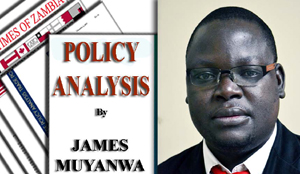 THE value of the Kwacha against the international convertible currencies has continued improving and crossed the K9-per-dollar mark last month.
THE value of the Kwacha against the international convertible currencies has continued improving and crossed the K9-per-dollar mark last month.
It can be said that the dear Kwacha has effectively recovered from the slumber it went into nearly two years ago when its value plummeted to K14-per-dollar level somewhere in November 2015.
Since then things, in terms of prices of goods and services, started going up and reached uncharted waters when the country’s rate of inflation shot up to well about 20 per cent from single digits.
For nearly two years, the Kwacha stayed in the doldrums as it was bashed, left, right and centre by the international currencies, particularly the dollar.
During the period of the Kwacha doldrums shopping became a nightmare because the prices were seemingly ever going up.
The local economy showed a lot of elasticity and responsiveness to the foreign exchange performance such that the changes even affected the prices of tomatoes from the backyard garden.
Whenever I visited supermarkets like Shoprite, Spar, Pick ‘n Pay and others I could see that people were enduring shopping instead of enjoying it.
This is because I could see that the shoppers, especially men, were painstakingly calculating the effects of the prices while comparing and contrasting the total amounts to be spent.
One could pick an item stand with it for some time while in deep thought, only to return it.
Normally, the changes in the value of the local currencies should not have so dire consequences on the local prices.
However, with the continued dependency on the imported goods this is inevitable because in one way or another every local product has a component of imported element in it.
In some instances, the importation of some of the goods is only for prestige and, therefore, unnecessary as it only helps to fuel the poor
performance of the local currency.
What some people do not realise is that every time they are importing anything, especially for consumption they are helping to weaken the
Kwacha, while also giving away job opportunities and perpetuating, if not worsening, the scenario.
The rapid fall in the Kwacha had some positive responses in terms of the Zambians’ reactions.
There was a reduction in the importation of some items, particularly motor vehicles from Japan and other countries.
This was because any such importation entailed the conversion of the Kwacha into dollar and, therefore, meant the incurring of the risen cost of the dollar for whoever held the Kwacha.
At that time it meant much more sense to buy a motor vehicle locally in Kwacha without being subjected to changing the money into dollar.
Therefore, the sharp fall in the value of the Kwacha provided an opportunity for the growth of the local manufacturing sector.
This is because a lot more people slowly started – or were compelled to start – developing affinity for locally-sourced goods.
However, since some of the prerequisites for the sector like machineries still had to be imported, the full benefits of that could not be realised.
While this was happening, the government, through its relevant wings like the Bank of Zambia (BoZ) was working to try and restore the
Kwacha to some reasonable levels.
The BoZ intervention measures, which included the mopping up of the Kwacha through its various instruments like treasury bills coupled with reduction in the importation of goods and services started paying off.
The Kwacha started strengthening against the dollar and other major currencies. From the K14-per-dollar mark it reached nearly two years ago the
Kwacha is now hovering around K9-per-dollar level which is not a mean feat.
Depending on what the target is the BoZ may now choose to stabilise it at the current levels or continue working to reduce it even further.
What should be done next depends on the economic objectives.
The challenge, however, is how to maintain the current rate or even better it.
This is because the current level of the Kwacha can trigger reactions which could counter the very gain which has been made so far. With the strengthened value of the Kwacha which, means cheaper dollar for anyone holding the local currency, potential importers of goods and services could be driven into importation frenzy.
Heightened level of importation will trigger the fall of the Kwacha, yet again! While the BoZ and the government can do so much in trying to instill stability of the local currency, the private sector, especially manufacturers, should play their part in coming up with more import substitutes to counter the importation.
Thanks to this year’s bumper harvest, there is at least no need to import foodstuffs like mealie meal and that would help to stabilise the Kwacha.
From the consumers’ point of view and in the interest of the fundamental benchmarks like inflation, the reduction in the price at which the Food Reserve Agency (FRA) will buy the maize from the farmers is a positive move. The full merits and demerits of that, however, is a story for another day!
For comments: 0977 246099, 0955 431442 or e-mail: jmuyanwa@gmail.com






